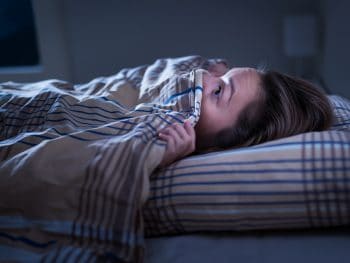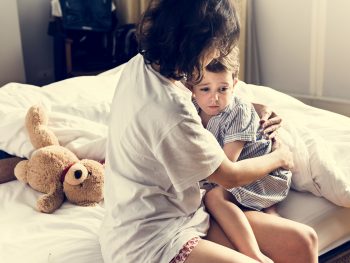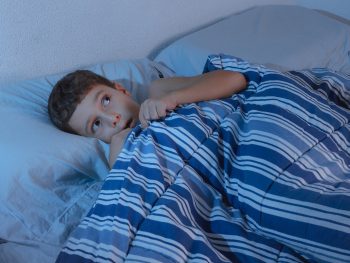Scoliosis is defined as a condition in which there is a spinal abnormality. The spine gets twisted to the sides or curves abnormally. It results in pulling the ribcage away from its position and leads to strain over the back muscles which causes discomfort and pain. Scoliosis is not considered as a rare disorder as 3-4 children in 1000 are affected with scoliosis.
The condition is mostly seen in children but can also occur at any age. People with scoliosis might have the following conditions:
- Congenital condition
- Early onset- develops during the early childhood
- Adolescent idiopathic- develops in the teenage or older children
- Denovo or degenerative condition- develops in adults
Signs and Symptoms of Scoliosis Pain
The symptoms associated with scoliosis include the following which varies according to the severity of the condition:
- Should blade starts appearing more prominent.
- One shoulder blade is slightly higher than the other and sticks out farther away.
- A rotating spine.
- Breathing issues due to the reduced space in the chest for the lungs to expand properly.
- Back pain.
- Cardiac issues in severe cases.
- Limited mobility which is secondary to functional limitation or pain in adults.
- Constipation which might occur due to the spinal curvature that causes tightening of the intestines, stomach, and
- Uneven waist.
- One hip is slightly higher than the other.
- Uneven shoulders.
If the curve linked with scoliosis is getting worse with time, the spine starts rotating or twisting, as well as curving from side to side. The condition ultimately results in ribs moving farther away from one side to the other.
What Caused Scoliosis Pain?
The causes of scoliosis pain include the following:
Scoliosis:
Scoliosis is defined as a condition in which there is an abnormal spine curvature. If you are suffering from an abnormal spinal shape such as curved in a side-to-side manner or in a C or S shape, then you might be suffering from Scoliosis. Scoliosis is diagnosed during the early childhood. The common causes include neurological abnormalities, birth defects, and genetic conditions.
Muscular dystrophy:
Muscular dystrophy is defined as a group of diseases which are inherited. The condition results in damaging and weakening effect on the muscles with time. The damage occurs due to the deficiency of protein termed as Dystrophin, which is an essential protein for normal functioning of the muscles. The lack of dystrophin results in problems with swallowing, walking and muscles coordination. Muscular dystrophy occurs at any age but most often occurs during the childhood.
Polio:
Polio also termed as Poliomyelitis which is a contagious disease. The disease occurs with a viral attack over the nervous system. It usually occurs in children aged 5 years because they are more prone to viral attack.
Turner’s syndrome:
Human body comprises of 23 paired chromosomes which store the genetic information on the X and Y chromosomes. These chromosomes determine the sex of an individual. Turner’s syndrome is a condition in which there is a genetic abnormality in the sex chromosomes. The condition is also known as Monosomy X, Bonnevie-Ullrich syndrome or Gonadal Dysgenesis. This syndrome occurs when X chromosome is partially or completely missing. The condition is more common in around 1 of 2000 females.
Cerebral palsy:
Cerebral palsy defines the group of disorders which affects the muscle movement as well as the coordination. The term Cerebral refers to the brain but it affects hearing, vision, and other sensations as well. The term palsy refers to the weakness of the body parts. Cerebral palsy is considered as the most common cause leading to motor disabilities in children.
Basal cell nevus syndrome:
It is a rare genetic abnormality which involves the group of disorders. The syndrome affects the endocrine system, skin, eyes, bones and nervous system. Basal cell nevus syndrome is also termed as Gorlin Syndrome, Nevoid basal cell carcinoma syndrome, and Gorlin-Goltz syndrome. The typical signs of this disorder include the appearance of skin cancer when you reach puberty. It is considered as one of the most common forms of skin cancer all over the United States. It is mostly found in people aged 45 years and above.
Diagnosis of Scoliosis
The first step to diagnose scoliosis includes the physical examination of your spine performed by the doctor. The doctor can also recommend some imaging tests to observe the spine closely.
Physical exam
The doctor observes your spine in a standing position with arms placed on the sides. He observes the spinal curvature along with that the symmetry of your waists and hips. The doctor will then ask you to perform certain positions i.e. to bend forward so that he can observe the spinal curvature in the upper as well as the lower back.
Imaging tests
Following are the imaging tests which are performed for diagnosing scoliosis:
- BONE SCAN
The radioactive solution is injected in the blood which helps in detection of areas with increased circulation and spinal abnormalities.
- X-RAY
The X-ray uses the minor amounts of radiation for creating the picture of the spine.
- CT SCAN
CT scan is advised because it provides the doctor with the 3-D picture of your body. It takes the X-rays of the body with a variety of angles.
Possible Treatment of Scoliosis Pain
The treatment for scoliosis pain depends on various factors, the degree of the curved spine is one of them. The doctor considers the following points before starting your treatment:
- Age of the patient
- Whether you will continue growth or not
- The type and amount of the curvature
- The form of scoliosis
The possible treatment options for scoliosis pain include the following:
Complementary therapies
The complementary therapies include physical therapy and Standard chiropractic care. The physical therapies include the use of ultrasound, heat and electrical stimulation. On the other hand, Standard Chiropractic care is very helpful for curing the spinal problems. However, it is not effective as a sole treatment option for scoliosis.
Other options include: massage, hydrotherapy, strengthening exercises that relieve the back pain and bracing which supports the spine.
Medication
Some medications might help in completely eliminating the pain or partially removing it. Sometimes the pain is controlled with the help of medications so that the physical therapy can proceed. The pain relievers for scoliosis include the NSAIDS for example Ibuprofen. Other medications can also be used such as Celebrex which aids in treating the inflamed area associated with arthritis. Another common option for relieving pain is Acetaminophen such as Tylenol. It is recommended to the patients to avoid using the narcotic pain relievers.
Counseling
The doctor might refer you to the counselor who can help you with chronic pain. It works well when the medical treatment options are not working well. There are counseling programs for scoliosis to discuss all the treatment options according to the interest of the patient and offer support services to the families and individuals who are affected by scoliosis. A type of counseling termed as CBT allows you to find ways which help in coping up with this condition.
Spinal injections
Epidural steroidal injections are the best to reduce inflammation associated with scoliosis. A facet block injection can also help in blocking the pain signals from reaching the brain. These injections transfer the anti-inflammatory medication to the inflamed area. The needle is injected in the back with X-ray guidance.
Spinal cord stimulation
Spinal cord stimulation is defined as the recognized therapy for Scoliosis after undergoing the conservative treatments which include the Physical therapy, use of medications and surgery. Spinal cord stimulation involves a minimal invasive procedure which requires a minor surgery on an outpatient basis. The electrical wire is placed which runs along the spinal cord. It is helpful for people who experience pain due to the nerve damage.
Managing Your Scoliosis
Mild scoliosis
Scoliosis varies according to the severity, if you are suffering from mild scoliosis try to perform simple exercises, physical therapy associated with scoliosis and medical observations. Yoga is also advised by some physiotherapists to increase the flexibility and decrease the body pain.
Moderate scoliosis
Moderate level of scoliosis involves the bracing that prevents the spine from further curvature. It all depends on the spine curvature, which is observed by your doctor who recommends treatment methods and medical observations.
Once the spinal curvature reaches a certain curve, along with the age of the individual, surgery becomes the only recommended treatment option. Surgery to improve the spinal curvature depends on the following factors:
- The shape of the spine
- The height of an individual
- Impairment associated with other parts of the body due to the spinal growth
Conclusion
The pain associated with scoliosis can easily be treated if diagnosed at an early stage. If the spinal curvature is severe, it can result in damage to the muscles, nerves, and tissues. The permanent damage to the tissues can be long-term and the treatment options do not work well in such conditions. It is advised to consult your doctor or physician as soon as you feel the pain so that he can manage a treatment plan for the condition.









Leave a Reply